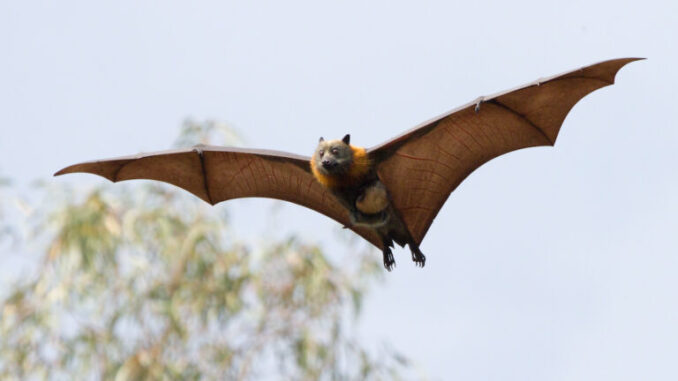
[ad_1]
The grey-headed and spectacled species of mainland flying fox — common in Australia, also known as “fruit bats” — have historically experienced such low numbers that they faced the possibility of extinction, reported The Conversation.
But after a decade-long survey by the National Flying-fox Monitoring Program (NFFMP) — coordinated by CSIRO, along with state and federal environmental agencies — it appears that the grey-headed flying fox has been relatively stable since 2012.
“Despite the general perception that the species is in decline, our raw data and the modelled population trend suggest the grey-headed flying fox population has remained stable during the NFFMP period, with the range also stable,” the researchers wrote in the survey. “These results indicate that the species’ extreme mobility and broad diet bestow it with a high level of resilience to various disturbance events.”
While heat waves, bushfires and drought are all hard on flying foxes, their overall numbers have been consistent, the researchers said in The Conversation. However, they emphasized caution.
“While this study is good news for the species, we must not become complacent. Heatwaves are expected to become more frequent and intense as the climate changes. Only further monitoring can determine its effects,” they said.
Because of a 30 percent population decline over 10 years, the flying fox was first determined to be “vulnerable” in 2001. The assessment also found the potential for continued habitat loss in the species’ core range due to land clearing.
Flying foxes socialize and rest during daylight hours in roosts that can consist of more than 100,000 individuals. At dusk, they fly off to forage at distances as far as nearly 25 miles from their home base — sometimes traveling more than 186 miles in one night.
“Their food of choice is nectar from a wide variety of eucalypt, bloodwood and melaleuca species. In return, they play an important pollination role, as if they were nocturnal bees with a one-metre wingspan,” the researchers said in The Conversation. “They also feed extensively on native figs. In urban areas, they feast on the nectar and fruit of introduced species found in gardens and street trees.”
Individual flying foxes often change roosts, moving throughout their range where food can be found. The shifting of occupants makes calculating accurate numbers difficult.
Over the course of the program, 912 potential roots were visited and nearly 12,000 counts taken. The research team found grey-headed flying foxes at 469 of the roosts.
Between 2012 and 2022, the team counted 580,000 grey-headed flying foxes in each survey, on average. Their total numbers were from 330,000 to 990,000, depending upon the season, food availability and their reproductive cycle.
“Flying foxes pup late in the year. When those pups become independent, they can be counted. This results in a sudden increase in the numbers, typically around February. So while our data show peaks and troughs throughout each year, overall the population remained stable,” the research team said.
The model the team came up with allowed for seasonal changes in calculating overall population trends. The model found that grey-headed flying fox numbers stayed at roughly 600,000 adults during the survey period. The study determined that there was a 70 percent likelihood of a small increase in population and a 30 percent likelihood of the population declining slightly.
The research team pointed out that the flying fox population seemed to be stable even in the face of extreme events like severe heat waves and the megafires of 2019 to 2020.
“The flying foxes seem resilient to these threats for two main reasons. First, they are nomadic and well adapted to travelling long distances. This allows them to evade threats such as fires and droughts,” the researchers explained in The Conversation. “Second, grey-headed flying foxes are likely to benefit from a ‘human-modified landscape’. In other words, they may well be urban ‘winners’, as the urban areas we’ve created provide diverse foraging opportunities.”
All major cities in Australia had grey-headed flying foxes continually living in them during the survey.
“These urban environments offer a smorgasbord of flowering and fruiting species, especially palms and figs. Many of these species are exotics, with flowering and fruiting patterns that flying foxes can readily exploit,” the researchers said.
The team highlighted that long-term impacts on the grey-headed flying fox were not known, considering monitoring stopped just two years following the 2019 to 2020 bushfires.
While grey-headed flying foxes still face threats to their survival, including those caused by climate change, the research team said they are safe for now.
“After ten years of monitoring we can safely say the grey-headed flying fox is doing ok, for the time being,” they told The Conversation.
This article by Cristen Hemingway Jaynes was first published by EcoWatch on 25 March 2024. Lead Image: A grey-headed flying fox mother in mid air with a baby clinging to its chest in Melbourne, Australia. CraigRJD / iStock / Getty Images Plus.
What you can do
Help to save wildlife by donating as little as $1 – It only takes a minute.
[ad_2]
Source link

Leave a Reply